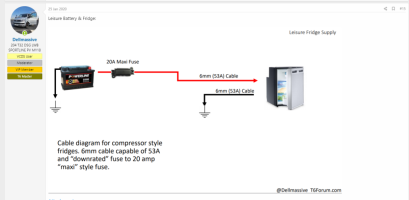Hello. The fridge in my campervan (used) doesn't have an external on/off switch, doesn't have an accessible fuse on the 12v board. So it is always on, and the previous owner just used the internal rotating power selector as an off switch by turning it to zero,
Is an on /off witch an easily accessible fuse the "normal" way to wire the fridge into a conversion?
Thanks for your comments.
Is an on /off witch an easily accessible fuse the "normal" way to wire the fridge into a conversion?
Thanks for your comments.


